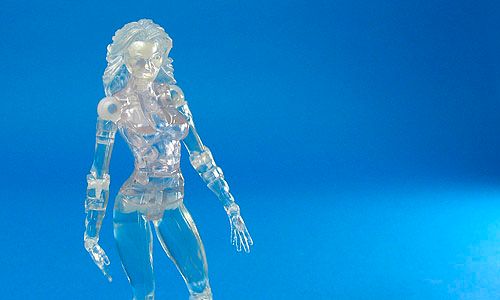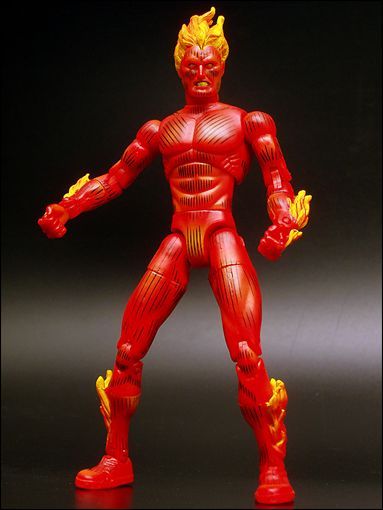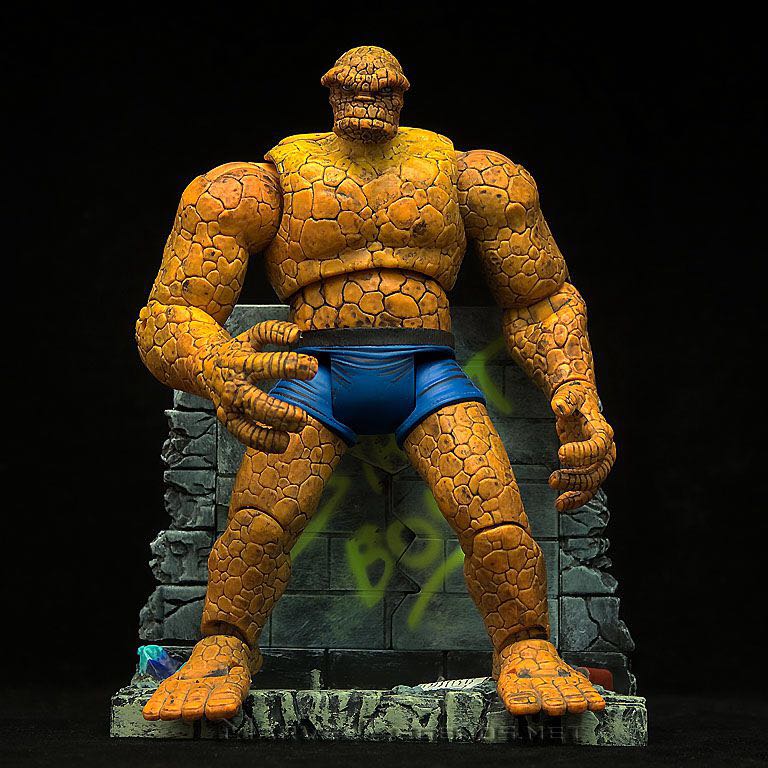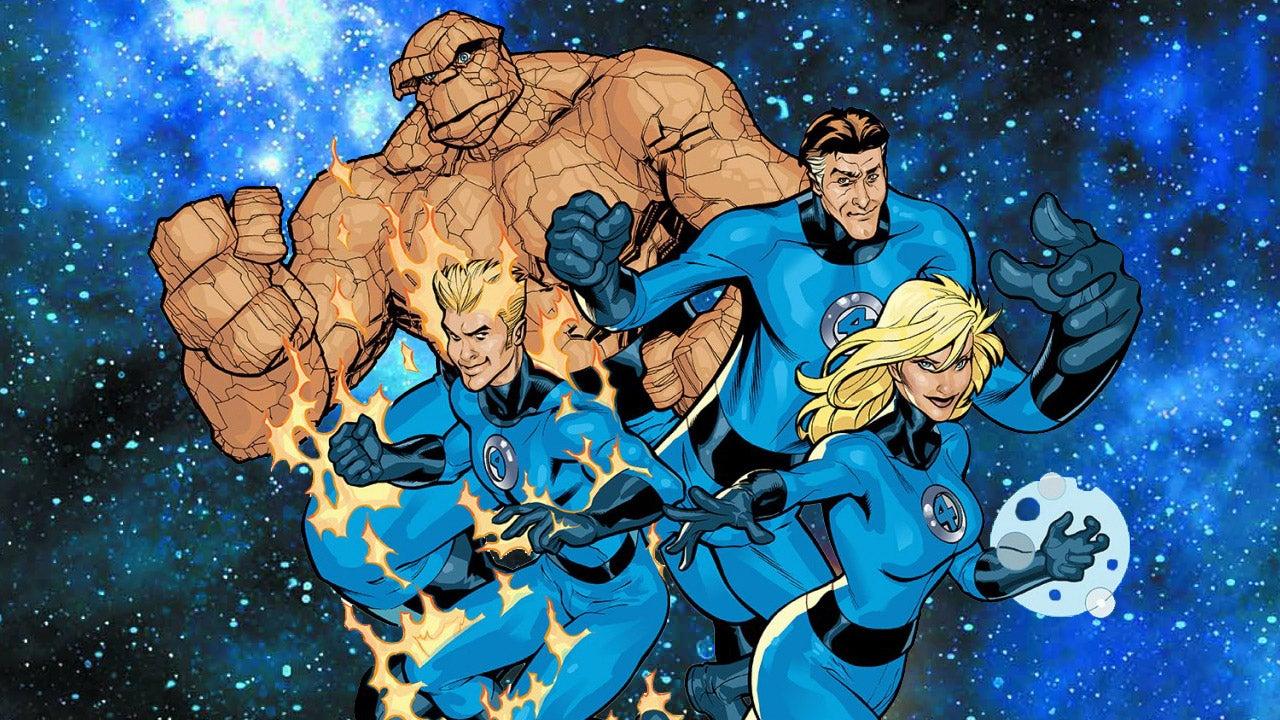The Fantastic Four were once Marvel’s undisputed “First Family”. This group of four comprised the first team title Marvel Comics ever produced (the Avengers wouldn’t assemble for another two years). They were a family of heroes beloved by comic book fans who often forming a moral center for the Marvel Universe as they enjoyed adventures and raised their kids right in the middle of Marvel’s Manhattan. This team also had a series with a creative pedigree dating back to the very earliest days of Marvel Comics. Created in 1961 by Stan Lee and Jack Kirby, in the world of sequential art and storytelling, it would be hard to find two names more core of the vintage “House of Ideas” than these two. Those early issues are even the models upon which future collaborative creative efforts between artist and writer are based. Mr. Fantastic, the Invisible Woman, the Human Torch and the Thing were and are nothing short of iconic and do not deserve the legacy they currently shoulder.
Where are they now? The Fantastic Four as a team is gone from the face of comics. They stand broken, the characters having moved on to other stories and even Four Freedoms Plaza, their longtime home, has been sold off (though Peter Parker did purchase it to keep it safe). Currently, there isn’t even a roof to shelter our favorite family and I think exploring why this all came to pass and doing a call back to the Fantastic Four’s very best collectibles is worth exploring.
Okay, if we are being very honest with ourselves, we’ve been watching a slow de-evolution of the team since the film franchise and subsequently dismal reboot took shape. Comic writer Jonathan Hickman ended a near legendary run on the series during the 2012 Marvel Now! event with issue #611. The series was relaunched in 2012 with Matt Fraction and Mark Bagley at the helm. The series would relaunch once again in 2014 with James Robinson and Leonard Kirk taking the reigns but by issue #645 the title stood cancelled. Robinson had the honors of bringing this family’s story to a close as the issue hit comic shops in June of 2015.
Now, Reed and Sue Richards (Mr. Fantastic and the Invisible Woman) are completely gone from comics. With Reed holding the powers of the Beyonder after the Secret Wars event, he’s taken his wife and family off camera to “rebuild the multiverse”. The Thing has been rechristened as a core member of the Guardians of the Galaxy and the Human Torch has dropped himself into a love triangle while serving as an ambassador to the Inhumans. At this time, only two of the famous Four are even appearing regularly in comics.
So, how did this team fall so far?
In my opinion, I feel it has a lot to do with the films and the history of Marvel Studios. Sure, a case can be made that over the years the comic series hasn’t exactly been outselling a lot of it’s competition, but I think the existence of series like the Unbeatable Squirrel Girl and the, new this week, Marvel Tsum Tsum series takes away a fair amount of credibility that comic sales alone drove this decision. No, I think if you watch Marvel Comics closely you can see a pattern and for this fan that pattern is most obvious when you look at the Fantastic Four.
Let’s start with some perspective on the situation. Basically there are a couple of primary players making Marvel movies these days; Marvel Studios, 20th Century Fox and Sony Pictures. Back in the 1990’s, before they began making their own films, Marvel began selling off film rights. Since that time films like Iron Man, Captain America, Thor and Avengers have been a cash cow for Marvel and they’ve been slowly working to get those lost rights to missing characters back.
If you ask many comic fans, I feel it’s pretty clear that we are championing those rights returning to Marvel Studios and it’s not just because they have a pattern of quality films that honor the source material. If you watch closely, who holds the film rights can feel as if that fact impacts the way characters are handled in the comics. To make understanding who owns what a little easier, let’s roll in an infographic provided by The Geek Twins.
Spider-Man, the most successful film property to date, is slowing weaving his way back into the Marvel Studios universe thanks to a deal with Sony Pictures. 20th Century Fox on the other hand has been holding tight to characters like the X-Men, the Fantastic Four and, of course, Deadpool.
Let’s back Deadpool out of the equation completely for now because everyone is making money off this character. Both the film and comic series have been a hit so this character has seen little narrative impact over at Marvel Comics. But what of the other 20th Century Fox characters? Here’s a rundown:
Wolverine: Killed off in 2014 and replaced by “Old Man Logan” with his genetic daughter X-23 taking on the namesake of this once cornerstone Marvel character. There feels like a clear distancing from the character presented in the films.
The X-Men: Increasingly taking a back seat to their narrative replacements, the Inhumans. With Marvel Studios having clear control over the characters and a film planned, the Inhumans are increasingly replacing the X-Men, narratively, in the Marvel Universe. The X-Men characters have begun slowly drifting to other titles and there have even been Avengers series mixing mutants and non-mutants further blurring the lines of their individuality as a concept. In more recent stories their very fight for survival has been challenged by the same Terrigen Mists, which propelled the inhumans to the spotlight. Those mists are currently creating Inhumans and killing X-Men. Can you get a more on point reference?
Fantastic Four: With the team disbanded, no Fantastic Four comic is currently being produced at Marvel and half the team is no longer even in the broader comic narrative. Playing on the great powers comes great responsibility concept, it appears that with lost film rights comes no real responsibility for the comic characters left behind.
Think what you will, but it seems very logical that Marvel would not feel driven to help promote something they don’t control in the cash generating world of film. Especially given the fact that they would ultimately like to see ownership of these characters return to their fold. For me, this is doubly sad, as the battle for control has led to a whittling away of stories I love. If they ultimately win control back, what will be left to rebuild?
Getting back to the Fantastic Four. When will we see Peter Parker hand the keys to Four Freedoms Plaza back to the Fantastic Four as a reunited team? I feel like it will happen when 20th Century Fox confirms they are not making another Fantastic Four film or when the rights revert back to Marvel Studios through some subsequent deal.
This is not out of the realm of possibility given how poorly the last film performed. I don’t think anyone can argue that the 2015 film was a complete flop. Fans and critics were united in their disdain for this 20th Century Fox reboot. Even director Josh Trank seemed to distance himself from it in the end. Cap that off with the film only doing $56 million domestically and that story has pretty firmly been told.
Putting all the doom and gloom aside for the comic versions of the X-Men and the Fantastic Four, I want to end on an up note and share with you my favorite action figure versions of the Fantastic Four. They can stand on my desk until they stand together in the comics once again.
Mister Fantastic released by Toy Biz in November 2003
Talk about a character that’s nearly impossible to represent in figure form. Due to his superhuman abilities, the malleability of his power set has had representations of Mister Fantastic run the gambit from rubbery stretchy to no powers shown at all. Here, I think the mix works well for showing off what he can do through interchangeable arms. Creative and creepy simultaneously, I think Toy Biz nailed the character here.
The Invisible Woman released by Toy Biz in July 2006

I love how much this character’s power set, maturity and disposition has evolved through the years. Marvel was never shy about showing the bad times alongside the good times in the adult, long-term relationship between Reed and Sue Storm. I following Sue’s growth as a woman, her independence, her devotion and her heroic stories over the years acutely. She is missed and in light of the fact that she’s currently missing in the Marvel Universe, a clear version of her invisible character seemed most appropriate.
The Human Torch released by Toy Biz in September 2002

There are a lot of Human Torch figures out there that present the character mid-change with his and arms on fire but the rest of him still in the familiar non-fire form. Most of these come off looking more akin to DC’s Firestorm than the traditional Marvel rendition. I love this 2002 version because it so perfectly matches the comic version I’ve known over the years. Here the lines noting the fire look like they leapt right off the page. This one is all win for me as a fan.
The Thing released by Toy Biz in September 2002

When it comes to the Thing, I’m fairly particular in terms of how he’s represented. With a heart as big as the Marvel Universe, his depiction as a character matters for me and the 2002 Toy Biz version takes top honors. Here we have the classic trunks, grim disposition and even a nod to the Yancy Street Boys. Classic Thing. Side note, anytime his film depiction is represented in figure form, just run screaming from the room. Those action figures are mostly a mockery of our ever lovin’ blue eyed buddy. From stern brow to the tip of his massive toe, this one just works for me.
So until we see these four back together, I’ll still make mine Marvel, but I’ll do it with a little less joy awaiting the day when a Fantasticar streaks through the sky once again.

